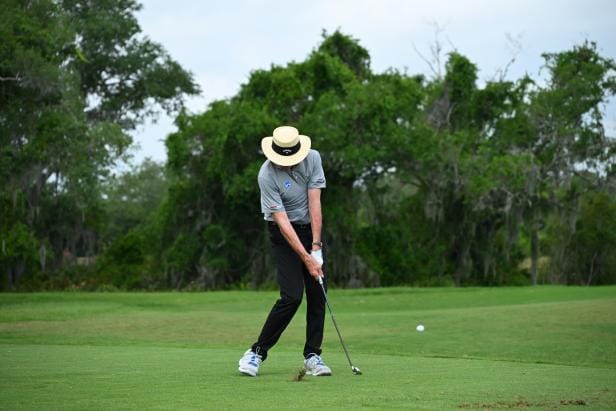Many golf professionals agree that the tighter lie, the better when it comes to hitting iron shots. However, many amateurs struggle with this concept, often preferring a cushy lie just off the fairway. The key to hitting solid iron shots lies in avoiding the casting motion, where the hands and arms dominate the downswing. To prevent this, proper lower body movement is essential, leading the way to compress the ball and making clean contact off the turf.
To determine if you are casting, you can hit 10 iron shots off fairway-height grass and rate the quality of contact for each shot. If you are consistently letting your hands and arms dominate the downswing, you will likely not achieve a high overall score. By videoing your swing, you can confirm whether your clubhead is trailing behind your body as it comes down into the ball, indicating a casting motion. The ideal clubhead path should follow the movement of your feet, legs, and hips, with lag being the key to hitting pure iron shots.
To develop a proper sequence of movement in the downswing, you can practice a drill where you make a backswing with your wrists hinged, left arm across your chest, and body fully wound up. From this position, pump the club halfway down and back up a few times, focusing on leading the motion with your feet and knees. This drill can help train your body to initiate movement with the lower body, setting you up to compress your irons effectively. You can even incorporate this drill into your actual shots to reinforce the proper sequence of motion.
By focusing on leading the downswing with your lower body, followed by the upper body, arms, and clubhead, you can achieve a more efficient and powerful impact position. This sequence of movement allows you to generate more clubhead speed and compression on the ball, resulting in longer and more accurate iron shots. Professional golfers use this lag technique to deloft the clubface at impact, maximizing distance and control.
To improve your iron play, it is essential to work on developing proper lag and downswing sequence. By emphasizing lower body movement and avoiding the casting motion, you can achieve cleaner contact and more consistent ball flight. Practicing drills like the pump drill can help ingrain the correct sequence of motion and train your body to compress the ball effectively. Incorporating these techniques into your practice routine can lead to significant improvements in your iron play and overall golf game.
In addition to technical drills, it is also crucial to maintain a positive mindset and focus on the process of improvement. Working with a qualified golf instructor can help identify specific areas for improvement and provide personalized feedback to enhance your iron play. By committing to a consistent practice routine and incorporating these key principles, you can enhance your ability to hit solid iron shots and lower your scores on the golf course. Remember, the tighter lie, the better – embrace the challenge and strive for excellence in your iron play.


